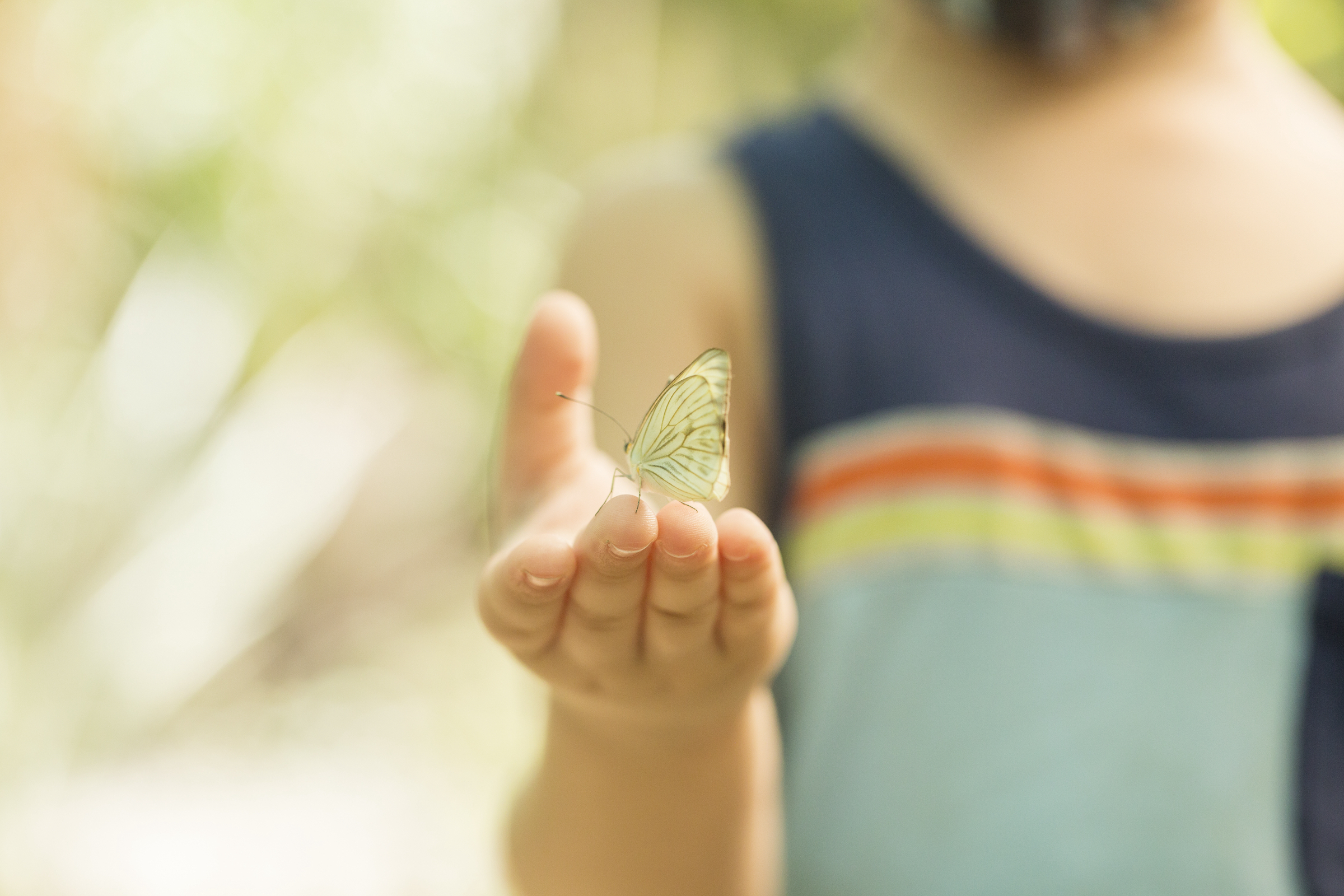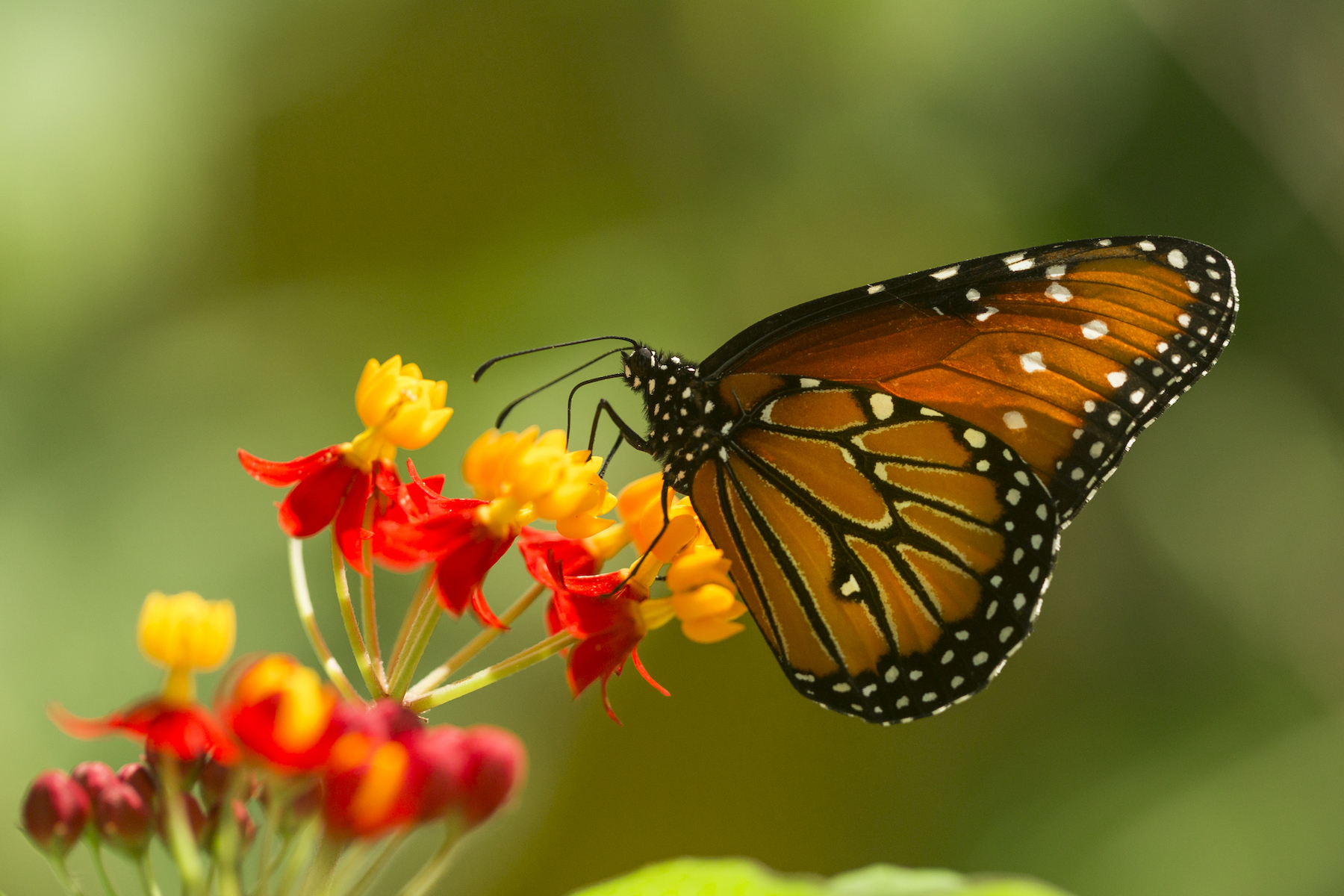Who doesn’t love butterflies? The ephemeral beauties are considered enchanting by most people — a rare status among insects. Perhaps it’s their colorful, iridescent wings that shimmer in the sunlight. Or maybe it’s their metamorphic entrance into the world that sparks wonderment.
But while butterflies may seem like an attractive addition to a flower garden, they’re also an important environmental indicator. Butterflies can tell us almost everything we need to know about the health of the surrounding ecosystem. They react quickly to changes in the environment, and they are major pollinators of both wild and cultivated plants.
In Mexico, the monarch butterfly is revered. Ancient Indigenous cultures believed the migrating creatures were the returning souls of loved ones, and the flapping of their wings delivered messages from the afterlife. Each fall, millions of monarchs descend upon the highland forests of Michoacán. While the population of monarchs has decreased dramatically in recent years, the worldwide popularity of this natural phenomenon, coupled with the country’s cultural reverence, has led to increased conservation efforts for the lepidopterans.

In Puerto Vallarta, one couple have dedicated their lives to the preservation and proliferation of all local butterfly species.
Fabian Reyes and Krystian Krys run Mariposario Jardín Mágico, a butterfly sanctuary that focuses on increasing butterfly populations, promoting conservation efforts, and raising awareness through education and outreach programs. The couple, who met in Peru about 12 years ago — Reyes is from the South American country, while Krys is from Poland — previously operated a popular restaurant in the Mexican beach town.
“We wanted to create something for the community,” Reyes says. “At the restaurant, I would see small children who were glued to their cell phones and didn’t get any outdoor activity. That is not good.”
THE SECRET GARDEN
Located in the Campo Verde neighborhood, about 15 minutes east of the Puerto Vallarta airport and about a half hour northeast of the city’s famed Malecón, the mariposario (mariposa is the Spanish word for butterfly) opened briefly in March 2020, followed by more than a year of COVID-mandated closure.
“We officially reopened in October 2021, and we are getting more and more visitors every day,” Reyes says. “It’s so satisfactory to see in a very short period of time what we have achieved.”
The sanctuary is housed on the grounds of Rancho Madre Tierra, an expansive ecological park that includes campgrounds, a disc golf course, mountain biking trails, a traditional sweat lodge, and a man-made pond.
A rustic dirt road leads guests about two miles into the park to a long rectangular red building with an arched roof covered in netting. The surrounding verdant landscape is wild and overgrown, with vines climbing up and over the structure. And at first glance, the sanctuary appears underwhelming, especially when compared to the large tourist-oriented, corporate-run butterfly exhibitions in the U.S.

According to Reyes, those companies purchase butterfly chrysalises from countries around the world and release all the species into the exhibitions.
“Every butterfly in nature requires a specific plant,” he notes. “If that plant is not present in their ecosystem, the butterfly will stress out and die. Then the companies will continue to buy and release more butterflies, and the cycle will never end.”
Inside his sanctuary, however, is a fantastical jungle of lush native flora and brilliant blooms. Climbing plants weave their way overhead on wires and support beams, while the large shiny leaves of tropical greenery mix with groupings of tiny textured ivies. A narrow gravel path directs visitors through the space, under vine-covered archways, and around clusters of potted perennials. And everywhere you look, butterflies flutter through the air like a kaleidoscopic display of fanciful fairies. A “magic garden,” indeed.
CONSERVING NATIVE SPECIES
There are more than 17,000 species of butterflies in the world. About 10%, or between 1,750 to 2,000 species, are found in Mexico, with more than 650 identified in the state of Jalisco alone. “Since 2018, we have been able to identify — just in this spot — 190 species. And those are just the ones that fly during the day,” Reyes points out.
The sanctuary is licensed to reproduce 35 species of butterflies. These include the Colobura dirce, or dirce beauty; Parides photinus, or pink-spotted cattleheart; Heliconius charithonia, or zebra butterfly; Pieris rapae, or cabbage white butterfly; and Hamadryas spp., commonly referred to as cracker butterflies due to the males’ ability to produce a “cracking” sound with their wings.
Before escorting guests on a guided tour through the almost 11,000-square-foot sanctuary, Reyes introduces them to some of the species they’ll see inside. He brings out a basket full of small plastic containers that hold caterpillars, chrysalises and cocoons. He talks about the natural defense mechanisms of caterpillars, how the metamorphosis process occurs, and how butterflies eat and mate.
“We have lots of information to share with people that I don’t think other butterfly sanctuaries do,” Krys says. For example, did you know that butterflies taste their food through their feet?
Because it is illegal in Mexico to catch wild butterflies, Reyes and his team collect eggs from host plants that grow adjacent to the sanctuary. “We grow the host plants outside, and the local butterflies come and lay their eggs, which we collect and take into our lab,” which is located at the rear of the sanctuary building, he explains.
In the wild, only about 3% of eggs survive. The rest fall victim to predators, such as spiders, birds, lizards, and frogs, and to humans who spray plants with harmful pesticides. Of those eggs that do develop, only about 30% of the butterflies survive. “We’ve been able to achieve a 96% survival rate, right now, and our goal is 98%,” Krys notes.
The sanctuary releases about 50 to 60 butterflies each day. The average lifespan of a butterfly in nature is two to four weeks. “Here, it can be six weeks,” Reyes says. During this time, the team studies the insects and their relationship to the ecosystem. “We need to study everything — the plants, the butterflies, how it is all connected together.”
Following their tour, visitors are invited to release butterflies. Each person is given a plastic container that holds a single butterfly. “When you help a butterfly take its first flight, in gratitude, it is going to give you one wish,” Reyes says. “This needs to be from your heart. The butterfly is going to keep your secret, and they will take it to the modern age.”
Read more Good articles from Green Living.







